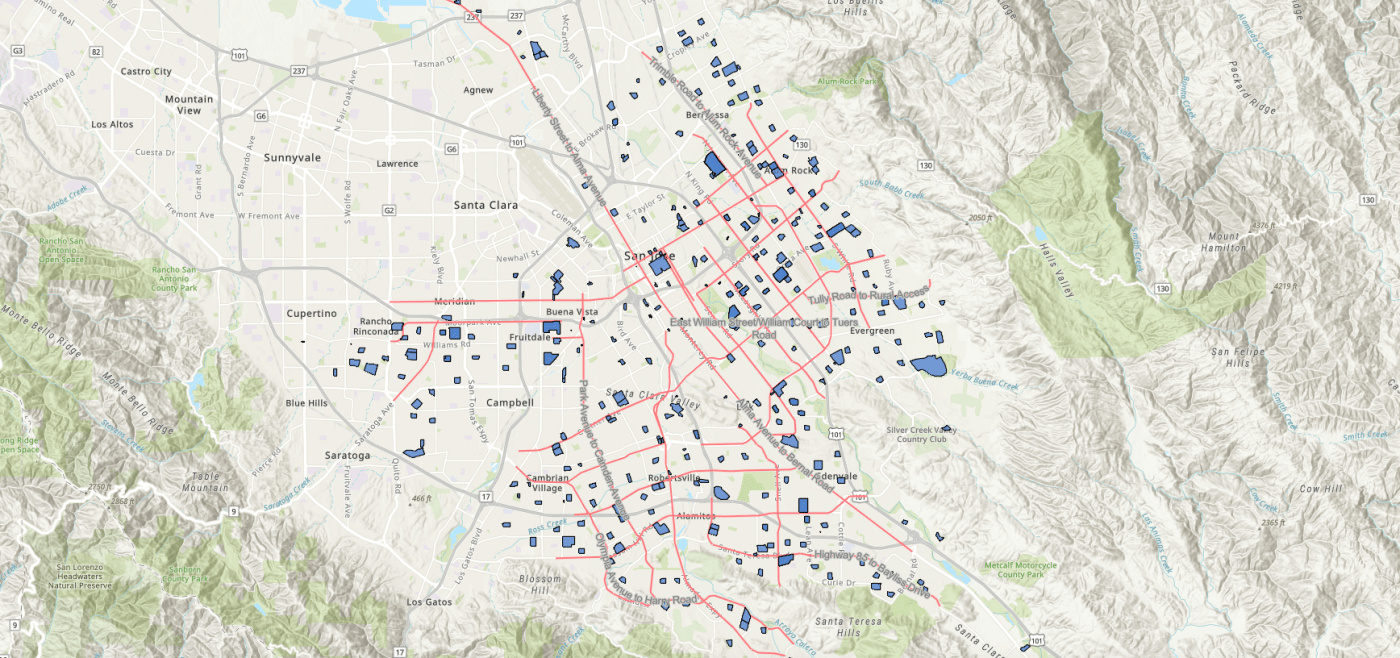
San Jose speed camera pilot program could be up and running by Spring 2025
San Jose has cleared the bureaucratic hurdles to launch its speed camera pilot program, paving the way for the city to install them by the end of next spring.
The city was one of six municipalities — joining Los Angeles, Oakland, Glendale, Long Beach, and San Francisco — authorized in a bill passed by the state legislature in October 2023 to test speed cameras to improve traffic safety and reduce fatalities.
However, before the city could procure its camera systems, the City Council needed to approve a use policy and impact report, as required by state law.
“We’ve made some progress in making our streets safer, but often say even one life lost is one too many,” San Jose Mayor Matt Mahan said Tuesday. “Last year, we lost 51 lives on our streets. This year we’ve lost 44 and we know we can do better. We’re going to continue to invest in quick-build safety improvements, public information and education, community engagement, and yes, enforcement to ensure that people are following our laws because we have them for reasons just to keep everybody safe.”
San Jose’s program will install 33 speed cameras around the city, including at least one in each of its 10 districts. State law requires placing cameras in geographically and socioeconomically diverse areas, for up to five years, with its sunsetting no later than 2032.
The policies approved Tuesday by the San Jose City Council prevent the recording of video and the use of cameras to investigate immigration status, monitor illegal activity, or for law enforcement purposes.
Lam Cruz, a division manager at the Department of Transportation overseeing the project, said the city has identified 63 potential locations, focusing on places where data shows a high prevalence of injury or death and where the cameras can operate 24 hours a day. The cameras will not be in school zones because state rules will only allow operation for three hours a day when school is in session.
The city will sign off on the final locations in April, using a data-driven approach and consulting with the vendor it selects.
“We’ve developed a list of 63 locations where there are high, fatal and severe injury crashes, including areas where there’s just a lot of injuries and where data shows that speeding, red light running and where vehicles are failing to yield to pedestrians are a contributing factor,” Cruz said. “We looked at locations near pedestrian generators, such as schools, senior housing and near retail. Staff also looked at traffic data where there’s a significant number of vehicles exceeding the 10-plus mile per hour threshold.”
Cruz said studies by the National Transportation Safety Board found that speed cameras could reduce fatal and severe crashes by 20-37%. The priority safety corridors identified by the city contribute 46% of fatal and severe injury crashes despite making up only 6% of the city’s streets.
She added that 30% resulted from speeding and 70% of fatal and severe crashes occurred on streets where the posted speed limit was 35 miles per hour or higher.
While the program could cost up to $17.9 million, San Jose has received $8.5 million in grant funding to help offset some of the financial burden. The city will cover the remaining costs through local funding and citation revenues, but the state has required the city to reinvest any net revenue from the program into traffic calming measures.
Once the camera locations are finalized, the city will begin a 30-day public outreach process. After the cameras are turned on, there is also a 60-day warning period, regardless of how many violations a person commits.
First time offenders will only receive a warning. Fines for subsequent violations will then start at $50 for exceeding the posted speed limit by 11-15 miles per hour and escalating upwards for more egregious offenses.
Programs will also be in place to ensure that the cost of citations does not disproportionately impact people with lower incomes.
“The process in the bill is set up so if there are specific parameters met by the individual. They have to submit certain income documents and declare their income,” DOT Deputy Director Heather Hoshii said. “Then, we will have programs set up to either reduce their fines or, if they qualify for diversion, to be able to provide work, potentially removing graffiti or picking up litter or some other action to void the payment requirement of their citation.”
Related Articles
Trash and illegal dumping in San Jose continue to skyrocket
San Jose launches mobile camera pilot to protect businesses from crime
Neighborhood leaders seek recall of San Jose Councilmember Omar Torres
San Jose councilmember Omar Torres requests 30-day medical leave
“Profits over people”: Good Samaritan’s San Jose campus improvements hit snag at planning commission
District 9 Councilmember Pam Foley, who also chairs the Vision Zero Task Force, emphasized that the city was not participating in the program to make money but rather to curb speeding and make the roadways safer as the city once again is on pace to meet or exceed last year’s traffic fatalities mark.
“We are on track to meet or exceed that goal, which is not a record I want to win,” Foley said. “I want to have this down to zero, as in Vision Zero, which is our goal in creating safe streets and the speed cameras are just one tool. We know that speed cameras work.”


